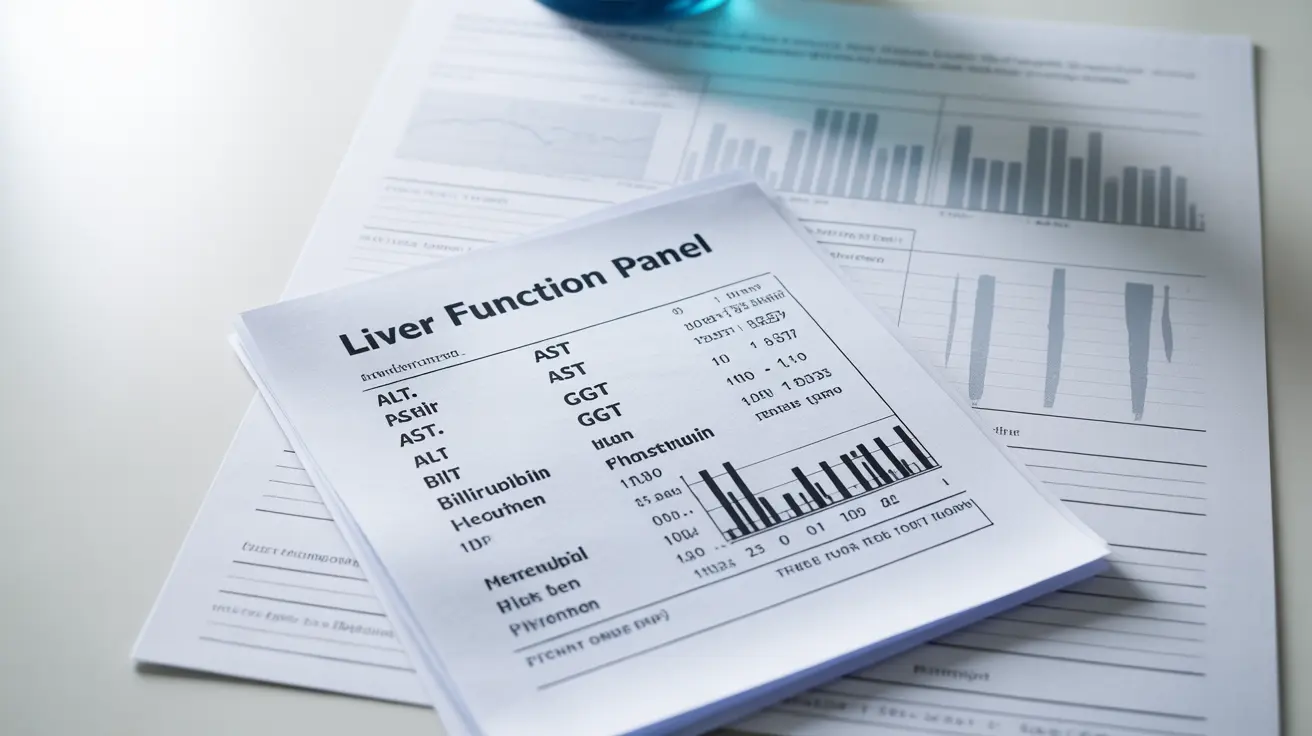If you've recently had blood work done to check for fatty liver disease, understanding your test results is crucial for managing your health. Fatty liver blood tests measure various liver enzymes and proteins that can indicate liver health and function. This guide will help you understand what these results mean and what steps you might need to take.
Regular monitoring through blood tests is essential, especially for those at higher risk of fatty liver disease, including people with obesity, type 2 diabetes, or metabolic syndrome. Let's explore what these tests measure and how to interpret the results.
Key Components of Fatty Liver Blood Tests
The most common blood tests for fatty liver disease examine several important markers:
- Alanine aminotransferase (ALT)
- Aspartate aminotransferase (AST)
- Gamma-glutamyl transferase (GGT)
- Alkaline phosphatase (ALP)
- Albumin levels
- Bilirubin
Understanding Liver Enzyme Levels
Elevated liver enzymes, particularly ALT and AST, are often the first indication of fatty liver disease. However, interpreting these results requires context and medical expertise:
Normal vs. Elevated Levels
Normal ALT levels typically range from:
- 7-56 units per liter (U/L) for males
- 7-45 U/L for females
Values above these ranges may indicate liver inflammation or damage, but they don't necessarily confirm fatty liver disease without additional testing.
Advanced Testing Methods
When basic liver function tests show concerning results, healthcare providers may recommend more specialized tests:
FibroSURE and FIB-4 Assessments
These advanced scoring systems help evaluate liver fibrosis risk and can provide more detailed information about liver health without requiring a biopsy. They combine multiple blood test results with other factors like age and BMI to calculate liver damage risk.
Monitoring and Follow-up Testing
Regular monitoring is crucial for managing fatty liver disease effectively. Your healthcare provider will determine the appropriate testing schedule based on your risk factors and initial results.
Risk Factors Requiring More Frequent Testing
- Type 2 diabetes
- Obesity
- High cholesterol
- Metabolic syndrome
- Heavy alcohol use
Improving Your Test Results
If your blood test results indicate fatty liver disease, several lifestyle modifications can help improve your liver health:
- Weight management through healthy diet
- Regular exercise
- Limiting alcohol consumption
- Blood sugar control
- Reducing saturated fat intake
- Increasing fiber consumption
Frequently Asked Questions
- What do high ALT levels on a fatty liver blood test mean, and when should I be concerned?
High ALT levels typically indicate liver inflammation or damage. Levels more than twice the upper limit of normal (>90-100 U/L) warrant immediate medical attention. However, even mildly elevated levels should be discussed with your healthcare provider.
- How often should people at risk for fatty liver disease get their liver enzyme levels checked?
People at risk should typically get tested every 6-12 months, though your healthcare provider may recommend more frequent testing based on your individual risk factors and previous results.
- What lifestyle changes can help lower abnormal liver blood test results in fatty liver disease?
Key lifestyle changes include losing excess weight, exercising regularly, limiting alcohol consumption, eating a balanced diet low in processed foods and sugar, and managing underlying conditions like diabetes and high cholesterol.
- Can a normal ALT result rule out fatty liver disease, or are more tests needed?
A normal ALT result alone cannot completely rule out fatty liver disease. Some people with fatty liver disease may have normal enzyme levels. Additional testing, such as imaging studies or specialized blood tests, may be necessary for a definitive diagnosis.
- What is the difference between a standard liver function test and a FibroSURE or FIB-4 score for fatty liver disease?
Standard liver function tests measure basic liver enzyme levels, while FibroSURE and FIB-4 scores are more sophisticated calculations that combine multiple blood markers with other factors to assess liver fibrosis risk. These advanced tests provide more detailed information about potential liver damage and disease progression.




